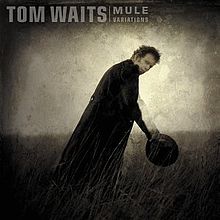Come On Up To The House
When selecting new repertoire for Community Guitar I gravitate strongly toward tunes that have a well-established track record. I prefer songs that have been around for decades, chosen again and again as worthy of reinterpretation by people who make it their business to choose songs wisely. There are two primary ways this spares me grief I might otherwise visit upon myself with more daring selections.
- If a song has passed the tests of time and satisfied the discerning tastes of many and diverse artists, there's good reason.
- This practice helps me keep at least one lip off the hook when someone expresses their own distaste for one of our songs. That free lip can mumble something like, "Well, Bonnie Rait (or Ray Charles, Doc Watson, Bob Wills, Gillian Welch...pick your preferred arbitor of good musical taste) likes it. So nanny nanny boo boo."
 |
"Come On Up To The House" has no such pedigree, so I've donned thin armor against such slings and arrows with this song. My only defense (apart from the quality of the song and the fact that Community Guitarists tend to be willing to cheerily give almost anything a try) is that it was penned by Tom Waits, an artist with ironic cachet given his long tenure as poet laureate of skid row. The song is co-credited to Waits' wife Kathleen Brennan, of whom he has said (according to her Wikipedia entry) "She doesn't like the limelight, but she's an incandescent presence on all songs we work on together." Nice.
I have bent my own guideline in this instance because, in addition to meeting several other criteria I have for our repertoire, this song fits snugly in a niche that is not easily filled: that of secular gospel music. I love gospel music, in all its varieties. Whether the song is a vehicle for high praise of God or profound lament of our earthly trials, I love the groove, the raw humanity of it, its insistence that we bring our full heart and voice to song. And although I am not a Christian, I don't personally mind singing my gospel straight up, Jesus and all. As a spiritual creativeI I have grown accustomed to focusing less on the words of religion than the breath that gives them life.
Still, I don't know that everyone shares my flexibility in this regard, so when I come across a well-crafted song that offers up some of the harmony and spirit of traditional gospel music without overt association with any particular religious tradition I perk right up. And though Waits does employ classic Christian tropes in "Come On Up" ("The world is not my home, I'm just passing through") I don't think any song with the lyric, "Come down off the cross, we could use the wood," could be fairly criticised for being overly pious.
 |
At this point in the song's young life, there are only two recordings of it that I regard as essential listening for our purposes (ie., learning it.) The first is Waits' original, from his 1999 release, Mule Variations. As you can hear from the following audio clip, he takes the tune at a stately pace. This selection is just long enough to also reveal the song's structure for singing: two verses followed by a chorus, again and again. In our arrangement of the song we'll take solos over the verse alone, so you'll need to be prepared to play a very slightly different chord progression for the chorus when the singer pipes up. That will come much more naturally to you if you really know the song, so consider downloading Waits' or another version and get yourself to church, so to speak, on it.
Audio Clip: Tom Waits,"Come On Up To The House"
 |
I first came across the song at a campfire jam, led by a fiddler who had been inspired by the other version I recommend to you. I'm not sure I would have recognized the jam potential of this song without it. The young and talented artist featured here, Sarah Jarosz, was new to me. A skilled vocalist, mandolinist and banjo player, she and her bandmates (on fiddle and cello) pick up the tempo and bring on the gospel funk in their cover. This is closer to the feel we'll go for in our arrangement, so get your blues game on. Jarosz & Co. do it in A, but our full arrangement is in C. We'll also try it in G to both meet the needs of vocalists for whom that key works better and to give us practice at yet another essential jam skill: transposition.
Audio Clip: Sarah Jarosz on "Come On Up To The House", from her Song Up in Her Head.
All Community Guitar Resources text & material © 2006 Andrew Lawrence
